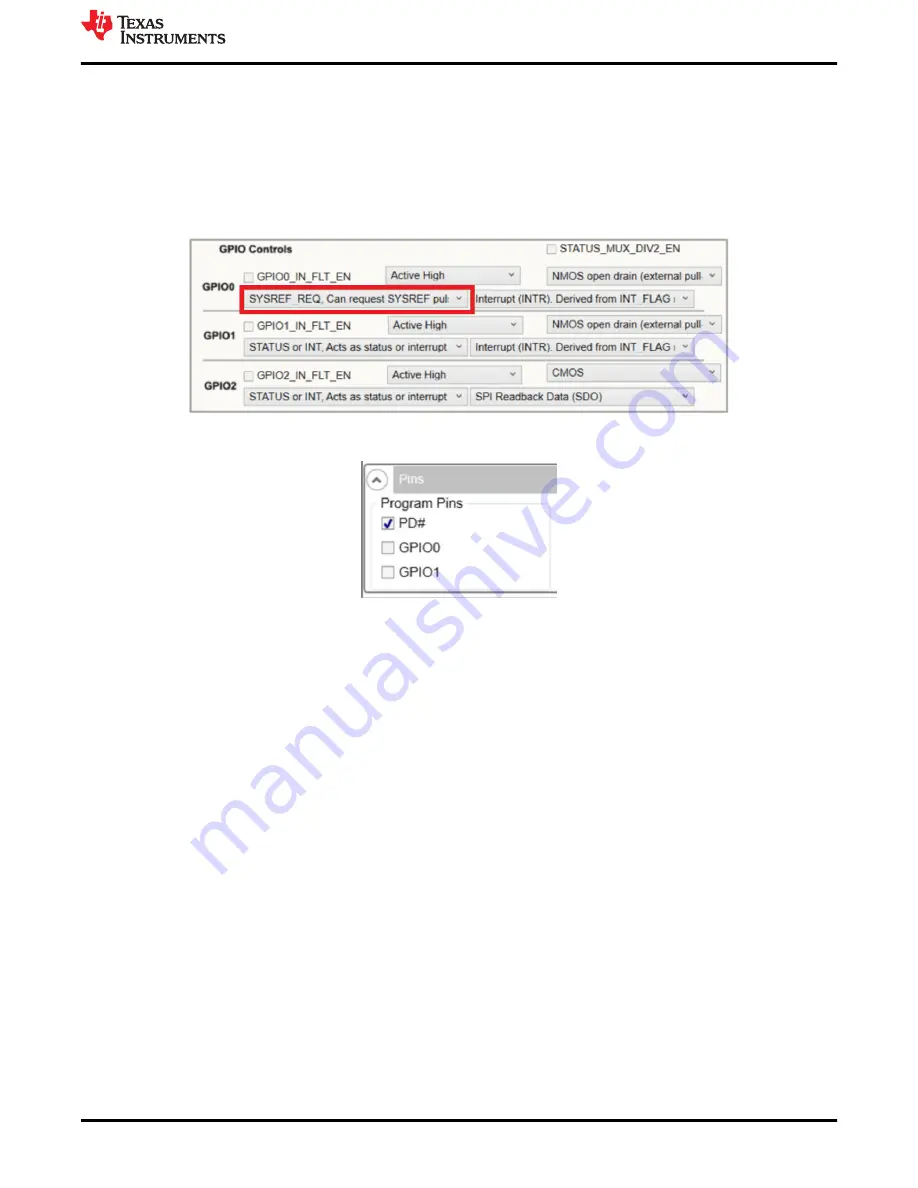
3.4 Generating SYSREF Request
A software request, GPIO0, or GPIO1 can be used to generate a SYSREF request. The TICS Pro software and
EVM is designed to use GPIO2 for SPI readback (SDO). Accordingly, GPIO2 is not listed in the pins as it is
dedicated for SPI readback. In a user application, any GPIO pin may be used.
Connect the desired GPIO pin to the MCU by setting S2 as ON on the switch block for the desired GPIO. Then,
make sure the GPIO pin is configured for
SYSREF_REQ
on the GPIO tab of the GUI. A SYSREF Request can
now be issued by toggling the GPIO buttons in the
Pins
section of the
User Controls
tab.
Figure 3-7. GPIO Setting for SYSREF Request
Figure 3-8. GPIO Pin Selection for SYSREF
3.5 XO Input
The LMK5B33414 has an XO input (XO pin) to accept a reference clock for the Fractional-N APLLs. The XO
input determines the output frequency accuracy and stability in free-run or holdover modes. For synchronization
applications like SyncE or IEEE 1588, the XO input would typically be driven by a low-frequency TCXO or OCXO
that conforms to the frequency accuracy and holdover stability requirements of the application. For proper DPLL
operation, the XO frequency must have a non-integer frequency relationship with the VCO output frequency of
any APLL that uses the XO input as its reference. The non-integer relationship should be greater than 0.05 away
from an integer boundary (meaning > 0.05 and < 0.95). When configuring the LMK5B33414 as a clock generator
(DPLL not used), then the XO frequency can have an integer relationship with the APLL output frequency.
EVM Configuration
SNAU279 – JULY 2022
LMK5B33414EVM User's Guide
11
Copyright © 2022 Texas Instruments Incorporated












































